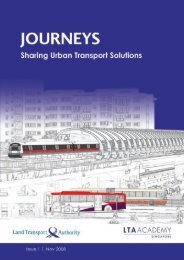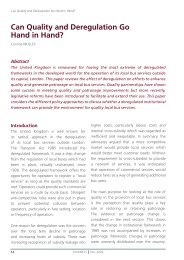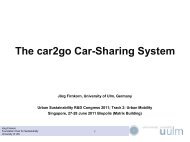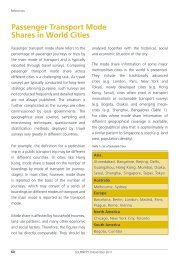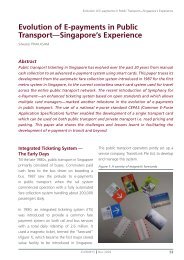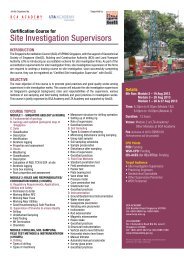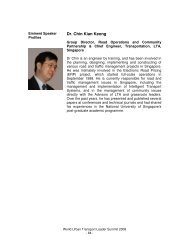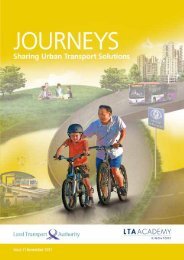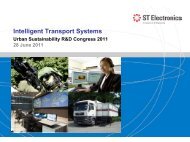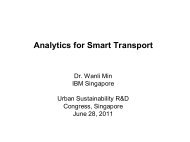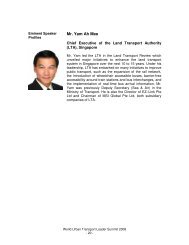Issue 4 May 2010 - LTA Academy
Issue 4 May 2010 - LTA Academy
Issue 4 May 2010 - LTA Academy
You also want an ePaper? Increase the reach of your titles
YUMPU automatically turns print PDFs into web optimized ePapers that Google loves.
GIS@<strong>LTA</strong> – Bringing Maps to Life<br />
in the transportation network design for the<br />
future. This will in turn yield considerable<br />
commuter satisfaction.<br />
<strong>LTA</strong>’s transport planners exploit the<br />
complementary strengths of transportation<br />
models and GIS systems to develop a<br />
comprehensive bus route network, fulfilling<br />
our role as the central bus planner. The<br />
graphical maps enable us to better understand<br />
the viability of various routes. By integrating<br />
data and layering with maps, we can easily see<br />
the demographics of the area being served<br />
by the bus network. It also helps us to better<br />
connect train and bus services, allowing train<br />
passengers to easily transfer to bus services<br />
and vice versa.<br />
With GIS, we can display ridership counts<br />
for different services and compare service<br />
ridership volumes. This comparative analysis<br />
can be used to check the coverage of the<br />
existing bus stop or RTS station. By combining<br />
historical ticketing data with a change of bus<br />
route, the model is able to highlight changes<br />
in ridership patterns and hence determine the<br />
feasibility of the proposed revised route.<br />
Public safety and road planning<br />
In the area of road safety, <strong>LTA</strong> leverages on<br />
GIS technology to significantly reduce the<br />
number of traffic accidents, fatal or otherwise,<br />
at accident-prone areas in Singapore to protect<br />
38<br />
GIS makes the visualisation of<br />
collision incidence distributions and<br />
patterns more intuitive than statistics,<br />
charts and tabular data.<br />
JOURNEYS <strong>May</strong> <strong>2010</strong><br />
motorists and pedestrians. GIS makes the<br />
visualisation of collision incidence distributions<br />
and patterns more intuitive than statistics, charts<br />
and tabular data. Through collaboration with<br />
Singapore Traffic Police, traffic accident locations<br />
and collision patterns can be easily visualised<br />
and analysed geographically in a process<br />
known as “Black Spot Analysis” (Figure 3).<br />
Trouble spots can be pin-pointed for our road<br />
safety engineers to implement mitigating<br />
traffic improvement schemes. This has yielded<br />
significant reduction in accidents over a twoyear<br />
period in treated areas; specifically, 66% at<br />
traffic junctions and 90% at expressways. <strong>LTA</strong>’s<br />
approach to road safety improvement garnered<br />
the Prince Michael International Safety Award<br />
2007 for outstanding achievements in its<br />
collaborative efforts to promote road safety<br />
through innovations in engineering and active<br />
public education.<br />
Figure 3: Black Spot Analysis<br />
By harnessing GIS technology, our road<br />
safety engineers are able to validate the<br />
effectiveness of the implemented treatments<br />
over a two-year period and further refine<br />
improvements for proactive maintenance<br />
of road carriageways across Singapore.<br />
Through predictive forecasts of road



